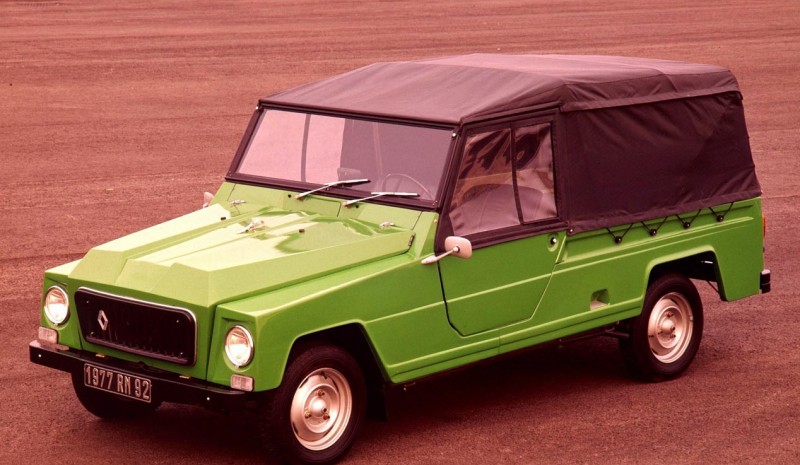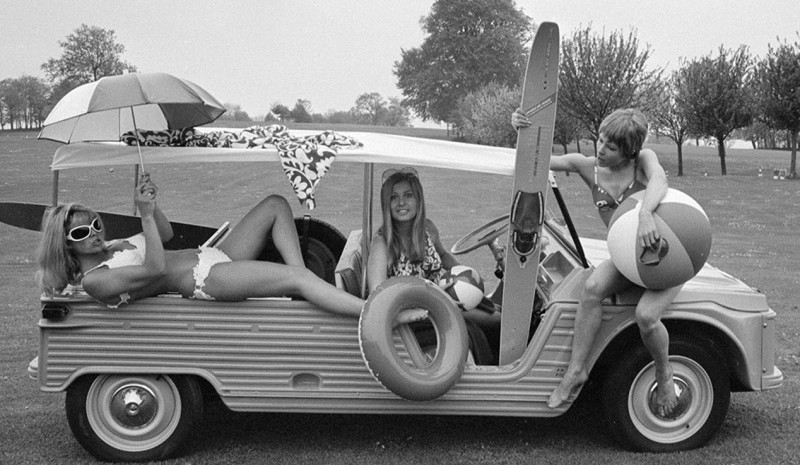Citroën Mehari: the most original todocamino
The appearance of Cactus Concept M has returned today to an admired, loved and desired in the 70 car: the Méhari.




Took its name from a kind of saharan dromedary, was the simplicity and robustness made car and, as a curiosity, He never left the drawing boards Citroen: Its origin is in the company SEAB (Société d’Exploitation et d’Application des Brevet, then called SEAP) dedicated to work on plastic and which produced the first Body in ABS, screwed to a tubular steel frame supported by the platform 2CV and Dyane 6.
Presented to the mark, it gave the green light to the project in 1968 and assembly is initially commissioned another company, ENAC, who already produced for vans derived Citroen 2CV, the AZU or popularly Cirilas.
The commercial success of Méhari forced to take production Citroën with plastic bodies that arrived from SEAB. So It was mounted in some European factories Citroën, including Spanish Vigo. It would remain substantially true to the original image (what most would vary grill, pilots and windshield) over two decades for sale. The three initials, beige, gold and dark green colors, color this chosen by the French army, he would add others as clear or popular beige among light orange and green more playeros cars, always achieved by effect of tinting the plastic. There were also blue or gray, even other shades of green as he used the Irish army. The Méhari military, of which more than 7,000 came to the French Armée, carrying a fuel tank 5 liters more capable, 25, who later would be used in production models.
Eventually, as well as aerators, heating, various pedals or fiberglass roof, also Mehari It incorporated a more powerful than 602 cm3 engine and 28 Original CV, 32 CV. The double carburetors made it necessary to modify the hood, an element that was also different in the Méhari 4×4, and housing the spare wheel.
With a canvas roof, removable doors and folding windshield, Mehari was, besides light, immune to corrosion its body. It sold both with four seats, and two commercial version until their disappearance in 1987.
Teihol, which had manufactured for Renault Rodeo, He carried out a project with the approval of Citroën, a second generation Méhari. This intention was reflected in the Tangara 3 CV presented at the Paris Motor Show and, finally, Citroën did not perform, but did produce until 1990. Teihol were used for the AX engines, as well as many other parts of both models Citroen and Renault.
Also AWD
Méhari within the family, 4×4 version It is the real black pearl, a rarity because although occurred between 1979 and 1983, therefore over four years, only 1,200 units were. In addition to the spare wheel located on the front hood -the transmission locate prevented, for example, under the boot, although well could have been vertically behind the passenger seat, as other distinguished Méhari-, especially at the end of its commercial life, a wheel arches and larger tires. Also the square taillights, not the usual circular: Acadiane were those of the van Dyane 6. Optional version, was available protective grilles for the headlights.
Its dimensions did not change compared to Méhari 4×2, which were held in 3.50 m long and 1.53 and 1.54 m, height and width, respectively.
The transmission, it was so mechanically marked differences, He came from Steyr Y He had a gearbox It is operating on three of the four speeds, and a rear differential lock. He engine was 29 hp, 0.6 liter twin carburetor body,
With its lightness if the 4×2 weighed 525 kg, the 4×4 was the 725- and this traction, 4×4 Méhari was a real SUV and could overcome slopes up to 60 percent, road although their performance was somewhat less. For example, the tip speed was reduced by 10 percent, to 100 km / h.
The anti-Méhari Renault
Citroën’s success with Méhari did not go unnoticed Renault, who endeavored to, just two years, to respond to the plastic car competition. Thus, the initiative gathered Raoul Teihol, owner of ACL. This company designed and proposed to Renault’s production of an anti-Méhari named RODEO, also with polyester body, a plastic resin.
The range of Renault RODEO tore in 1970 and would be more abundant than its French neighbor because they were mounted versions 4 and 6, differentiated, regardless of size -13 cm long between both- based engines usasen: 0.8 liters of 34 CV, from the R-6; 1.1 or 47 CV, substituted since 1980 for 1.3 45, the R-6 and R-5 TL GTL. The platform was always van R-4.
In 1981 appeared the RODEO 5, replacing the previous two motor 1.1. He would be built on the Hoggar version, optionally with AWD developed by Sinpar and similar to that of R-4 4×4. Renault production ended in October 1986 after 60,000 units.
